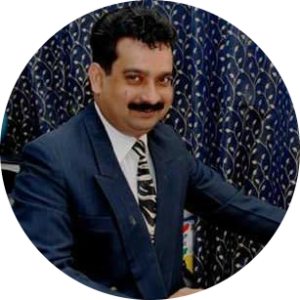The chief events of Harsha’s reign can be briefly stated. Harsha on coming to the throne set himself to bring the whole of Aryavarta under his sway, which he did in some cases by conquest, in some cases by alliance as with Madhava-Gupta of Magadha and Kumara of Kamarupa. Nepal and Kashmir were also within his empire,
While his authority north of the Vindhyas was complete Harsha’s arms met with a definite set back when he advanced towards the south. The emperor of Aryavarta was opposed and defeated on the banks of the Tapti by pulakesin II, the monarch of Chalukyas, who himself assumed the title of emperor on the basis of his victory over Harsha. After the defeat at the hands of Pulakesin, he seems to have turned more to the arts of peace. Himself a dramatist and a poet of great distinction, Harsha’s court attracted the greatest writers of the day, like Bana, Mayura, Hardatta and Jayasena. The Chinese pilgrim lived at his court and we have there fore a trustworthy description of the life of the times.
In his personal religion Harsha was a follower of the Buddha; but as in the case of other Buddhist kings he remained a Hindu. In his own books it is to Shiva that he prays. Daily he fed five hundred brahmins along with a thousand Buddhist monks. At allceremonial festivals of the king, Shiva and Vishnu received full honours along with the Buddha.
However, artificial glow illumines the reign of Harsha. It is important to note that Harsha’s empire was one which was composed of powerful independent monarchs, who accepted the suzerainty of Harsha more as a personal homage than as subordiation to an empire. The great dynasty of the Maukharis, though allied to that of Harsha, ruled over the eastern portion fo their hereditary dominions. Madhava-Gupta of Magadha was a powerful monarch. The Maitrekas of Vallabhi and Kumara Bhaskara of Kamarupa were hardly vassals of the empire. The only thing is that all of them recognized the personal greatness of Harsha and accepted him as a suzerain. Thus, his dazzling personality alone gave a semblance of unity to the empire which extended from the Indus to the Brahmaputra.
ADMINISTRATION OF HARSHA
The administration of Harsha is one inname only. Whatever information we have on it does not speak well of it. And the only relieving feature of this picture is the striking personality of Harsha.
Harsha’s interest indirect supervision of administration is one plus point. Hiuen-tsang writes that “If there was any irregularity in the manners of the people in the cities, he went amidst them.” Inscriptions reveal that Harsha had stayed in two places during his travels. Harsha traveled ingreat state and his camps looked very impressive because he was surrounded by a number of guests. Hieum-Tsand writes: “The king’s day was divided into three periods of which one was given to the affairs of government, and two were devoted to religious work. He was indefatigable, and the day was too short for him.” The way in which Harsha worked was recorded by Bana also.
The emperor appointed provincial governors known as Lokapalas who were posted at chosen centers in different quarters. The provinces were known as Bhuktia, districats as Vishayas, sub-divisions of districts as Patakas and Villages as gramas.
Next to the sovereign was the chief minister and the mantriparishad. According to Bhandi, a cousin of Rajayavardhana, Harsha’s accession to throne was approved by the parishad. This account is corroborated by the Chinese pilgrim. Avanti was the supreme minister of war and peace, according to Bana. For maintaining law and order, a great number of military and executive officers were employed. At times, some of the high officers were combined in one and the same persons. A few other names also are known: Simhanada was Harsha’s senapati. Harsha treated him with great respect as he was a scholarly man. Also, we hear of a handful of officials who themselves were chiefs indicating that in all probability Harsha’s sovereignty was of a confederate nature. According to Hiuen-Tsang, both ministers and officials received land grants instead of salaries. One-fourth of eth crown land was set apart for the endowment of great public servants and another one-fourth for the expenses of government and State worship.
The army of Harsha was organized into four traditional divisions. Probably 60,000 elephants and 100,000 horses. However, some of the regions were not free from brigands as is known from the experience of Hiuen-Tsand who was way laid.
Lawlessness was not the order of the day but there were plots against kings including one against Harsha. The offender was punished by imprisonment for life. for offance against social morality the punishment was either mutilation of limbs or deportation. Trial by or deal was common. Justice was harsh, but as the Chinese pilgrim maintains, the government was very generous and did not make any large demands either on the liberties or pockets of the people.
In general, the country was not entirely free from brigands who made traveling very risky. Hiuen-Tsand himself twice had narrow escapes from the clutches of bandits, Villagers haunted by the fear plunder often questioned the right of the King to rule according to Bana. However, as Hiuen-Tsand states that since the government was honestly administered, the people lived on good terms and the criminal class was very small.
Regarding administration of provinces and villages very meager information is available. The territory of the empire was called rajya or desa, which was divided into bhuktis, visayas and gramas. The governor of the provinces was, at times, a member of the royal family. The governor appointed his suordinate officials. Probably, the officials mentioned in the Gupta period continued to work in the time of Harsha. Besides the officials of states non-official element was also associated with the local administration. The Madhuban plate of Harsha (grant of an agrahara to some persons) states that the grant was made in the presence of all his chief officers and the resident people who were summoned as witnesses to this transaction. Such orders of the king were, at times, signed by Harsha himself. The Banskhera plate was signed by Harsha and described as one given under his own hand and seal. Often the king’s orders were delivered through messagers to local officers, who in turn, grew up necessary charters and handed over the grant to the grantees.
Finally, regarding fiscal administration we get some information from inscriptions. In all probability, land was surveyed measured and divided into holdings with well-defined boundaries. The holdings were of different sizes. At times these were served by common land which in certain cases, had irrigation wells. The names of owners of land were entered in the village records. It appears that record of village census was also kept. It is certain that land revenue was only a modest percentage of total yield. Taxation was light-revenue from crown lands amounted to only one -sixth of the crop, according to traditional standard. The other sources of revenue were trade, and duties at ferries and barrier stations.
The enlightened character of Harsha’s administration is shown by the creation of a department of records and archieves. Both good and bad were faithfully recorded in officials annals and state papers while instance of public calamities of good furtuns are set forth indetails. Taxation was light. The land tax was one-sixth of the crop. According to tradition, standard revenue was also derived from trade. Ligth, duties were levied on ferries and barriar stations.
In this manner, we have a very shetchy knowledge of Harsha’s administration. Ineed the administration was not well integaretd as Harsha domain itself was so shaky. However, the fat that the knig devoted himself to the welfare of the people by traveling in the country and the generosity with which he gave grants, shows that he was one of the illustrious rulers of Inda the manner of Ashoka and Shaivaji.



 Users Today : 134
Users Today : 134 Total views : 693095
Total views : 693095